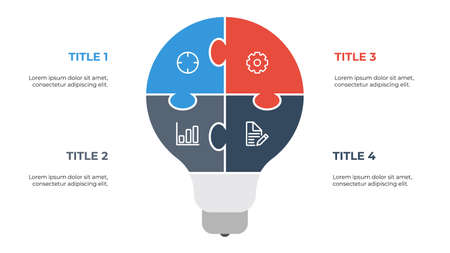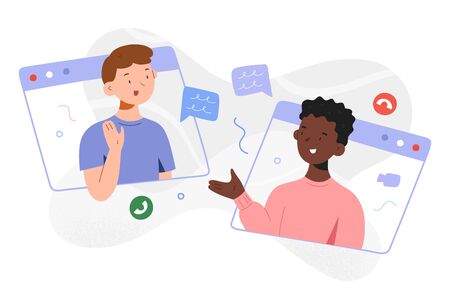1. Understanding the US Audience Landscape
The United States is not a single, uniform market. Instead, its a patchwork of cultures, backgrounds, and lifestyles that influence how people shop, what they value, and how they respond to products and services. If you want to succeed in the US, it’s essential to understand this diversity and recognize why a one-size-fits-all approach rarely works here.
Cultural Diversity
America is known as a melting pot for a reason. People from different ethnicities, religions, and traditions live side by side. This variety shapes preferences for everything from food to fashion and technology. For example, marketing that connects with Hispanic communities in Miami might not resonate with Asian-American audiences in San Francisco. Being aware of cultural norms and traditions helps brands avoid missteps and build genuine connections.
Geographical Differences
The US stretches from coast to coast, covering various climates, city types, and local cultures. Coastal cities like New York or Los Angeles have different consumer habits than small towns in the Midwest or the South. Weather also plays a role; winter gear sells better in Minnesota than in Florida. Here’s a simple table to highlight just a few regional distinctions:
| Region | Key Consumer Traits | Popular Products/Services |
|---|---|---|
| Northeast (e.g., New York) | Fast-paced, trend-driven | Tech gadgets, public transit apps |
| South (e.g., Texas) | Community-oriented, traditional values | BBQ grills, pickup trucks |
| West Coast (e.g., California) | Eco-conscious, health-focused | Organic foods, fitness services |
| Midwest (e.g., Illinois) | Family-centered, price-sensitive | Bulk groceries, family vehicles |
Demographic Factors
The US population spans all ages, income levels, and education backgrounds. Younger consumers might be more open to trying new tech or eco-friendly products, while older generations may look for reliability and trusted brands. Income also affects what people buy—luxury brands appeal to high-income groups but could alienate budget-conscious shoppers.
Why One-Size-Fits-All Fails
When companies ignore these differences and treat all American consumers the same way, their products often miss the mark. Tailoring your offer to fit local needs—not just language but lifestyle—shows respect for your customers’ unique identities and increases your chances of success in each market.
2. Identifying Regional and Cultural Preferences
Why Regional and Cultural Insights Matter
The United States is not a one-size-fits-all market. From coast to coast, people have unique lifestyles, traditions, and expectations. Understanding these differences helps businesses connect with customers in ways that feel personal and authentic.
How to Research Local Preferences
Start by gathering data on your target audience in different US regions. Here are some practical methods:
- Surveys & Polls: Ask potential customers about their needs and preferences.
- Social Media Listening: Monitor discussions and trending topics in specific cities or states.
- Local Events & Festivals: Attend or follow major events to see what matters most to each community.
- Census Data: Use government resources to learn about demographics and cultural backgrounds.
Key Values and Pain Points by Region
The table below highlights examples of regional differences in the US:
| Region | Main Values | Pain Points | Example |
|---|---|---|---|
| Northeast (e.g., New York, Boston) | Diversity, fast-paced lifestyle, innovation | Lack of time, high cost of living | Quick-service apps are popular for busy professionals |
| South (e.g., Texas, Georgia) | Tradition, hospitality, community | Loyalty to local brands, sensitivity to price changes | Brands succeed by supporting local causes and using friendly language |
| Midwest (e.g., Illinois, Ohio) | Simplicity, reliability, family values | Skepticism toward flashy marketing, preference for value deals | Homegrown brands that focus on trust do well here |
| West Coast (e.g., California, Washington) | Sustainability, health-consciousness, tech-savvy | Environmental concerns, desire for innovation | Sustainable packaging and eco-friendly products are highly valued |
| Southeast (e.g., Florida, Carolinas) | Relaxed lifestyle, outdoor activities, friendliness | Weather impacts choices, strong regional identity | Outdoor gear tailored for humid climates sells well here |
Real-World Example: Fast Food Chains Adapting Menus
Major fast food brands like McDonald’s often change their menu items based on location. In the South, you might find sweet tea as a staple beverage option. On the West Coast, salads and plant-based alternatives are more common. This kind of adaptation makes each customer feel seen and valued.
Tips for Getting It Right:
- Stay Curious: Trends shift quickly—keep researching regularly.
- Engage Locals: Hire team members from different regions or partner with local influencers.
- A/B Test Offers: Try out different versions of your product or message to see what resonates best in each area.

3. Customizing Products for Local Relevance
To truly connect with different US audiences, it’s essential to make your products feel local and relevant. The United States is a huge country with many cultures, tastes, and traditions depending on the region. What works in New York might not be as appealing in Texas or California. Let’s explore practical ways you can adapt your products to fit these local preferences.
Adapting Packaging to Regional Preferences
Packaging is often the first thing customers notice. Adjusting colors, graphics, and even language on packaging can help your product stand out on local shelves. For example, eco-friendly packaging might be highly valued in Portland or Seattle, while bold, vibrant colors could attract shoppers in Miami.
| Region | Preferred Packaging Style | Key Considerations |
|---|---|---|
| West Coast (e.g., California) | Sustainable, minimalist design | Eco-friendly materials, clear recycling info |
| Southwest (e.g., Texas) | Bold colors, larger sizes | Highlight value, local pride symbols |
| Northeast (e.g., New York) | Trendy, modern look | Eye-catching graphics, limited editions |
| Southeast (e.g., Florida) | Tropical vibes, vibrant hues | Weather-resistant packaging for humidity |
Tweaking Product Features for Local Appeal
Differentiating features can help your product better meet the needs of specific US regions. Think about how climate, lifestyle, or cultural preferences affect what people want. For instance:
- Flavor Variations: Offer spicier options in the Southwest and milder versions in the Midwest.
- Size Options: Larger family packs might sell better in suburban areas; single-serve packages could be popular in urban centers.
- Tech Adaptations: Integrate voice assistant compatibility for tech-savvy cities like San Francisco or Austin.
Incorporating Local Design Elements and Imagery
Add touches that reflect the local culture—such as city skylines, regional landmarks, or sports team colors—to build an emotional connection. This helps customers see your brand as part of their community rather than an outsider.
Examples of Localized Design Elements:
- Use Chicago’s skyline silhouette on packaging sold in Illinois stores.
- Add southwestern patterns or motifs to products sold in Arizona or New Mexico.
- Create limited-edition versions featuring local holiday themes or events.
Key Takeaway:
The more you can customize your products’ look, feel, and features for specific US markets, the more likely you are to win loyal customers who feel understood and valued.
4. Personalizing Services for Unique Needs
When serving the diverse US market, one size definitely doesn’t fit all. Personalizing your services is key to building trust and loyalty with different customer segments. Let’s break down how you can adapt your approach for a variety of audiences across the United States.
Understand Customer Preferences
The first step in personalization is understanding what your customers value most. Different regions and communities have unique expectations about service style, communication, and even product features. For example, tech-savvy urban customers may appreciate digital self-service tools, while older or rural customers might prefer more traditional, phone-based support.
| Customer Segment | Preferred Communication Style | Service Expectations |
|---|---|---|
| Millennials & Gen Z | Text, Chat, Social Media | Fast responses, digital convenience |
| Baby Boomers | Email, Phone Calls | Personal touch, clear instructions |
| Hispanic/Latino Communities | Bilingual (English/Spanish) | Cultural respect, family-oriented messaging |
| LGBTQ+ Community | Inclusive Language | Respectful interactions, safe spaces |
| Urban Professionals | Email, App Notifications | Efficiency, time-saving features |
| Rural Customers | Phone Calls, In-Person Support | Community connection, reliability |
Customize Your Communication Style
Your words matter! Adjust your language and tone to reflect the preferences of each audience. Use plain English for clarity and avoid slang that may confuse non-native speakers. For multicultural markets, consider hiring bilingual staff or using translation services so everyone feels understood and valued.
Tips for Effective Communication:
- Be approachable: Use friendly greetings like “Hi there!” or “How can I help you today?” instead of overly formal phrases.
- Acknowledge diversity: Celebrate holidays or events relevant to different groups (e.g., Hispanic Heritage Month).
- Ask for feedback: Invite suggestions on how you can improve your service for specific communities.
Create Flexible Customer Support Options
Diverse customers have different needs when it comes to support. Offer multiple ways to connect—live chat for quick questions, phone calls for complex issues, and in-person help where possible. Make sure your team is trained to handle various requests with empathy and patience.
Examples of Flexible Support Channels:
- Live Chat: Great for immediate help on your website or app.
- Toll-Free Phone Line: Especially helpful for older adults or those without reliable internet access.
- Email Support: Allows detailed explanations and attachments.
- Bilingual Hotline: Essential for regions with large Spanish-speaking populations.
- Social Media DMs: Popular among younger demographics.
The more you personalize your services and communication, the stronger your connection will be with America’s wonderfully varied audience. Focus on listening to their needs—and adapting as you go—for long-term success in the US market.
5. Marketing Approaches That Speak to Everyone
Understanding the Power of Inclusive Messaging
When marketing products and services in the US, it’s important to speak to the country’s incredible diversity. Your brand can stand out by making everyone feel seen and valued, no matter their background or identity. The key is to create campaigns that honor different cultures, languages, and experiences while staying true to your brand’s core values.
Choosing the Right Language
Language matters—both in what you say and how you say it. Consider offering multilingual content if your audience includes non-English speakers, such as Spanish or Chinese translations. Even when using English, be mindful of regional slang or references that may not resonate with everyone. Focus on clear, friendly language that avoids stereotypes or clichés.
Examples of Language Choices
| Audience | Approach | Example Phrase |
|---|---|---|
| Bilingual Families | English & Spanish Messages | “Welcome! ¡Bienvenidos!” |
| Younger Audiences | Casual Tone, Social Media Slang | “Let’s get started!” vs “Begin now” |
| Seniors | Simple, Respectful Language | “We’re here to help you every step of the way.” |
Selecting the Best Channels for Each Group
Diverse audiences often prefer different communication platforms. For example, younger customers might favor TikTok or Instagram, while older generations may prefer Facebook or email newsletters. Community newspapers or local radio stations can also be great ways to reach specific cultural groups.
Channel Preferences by Demographic
| Demographic Group | Preferred Channels | Tone/Style Tips |
|---|---|---|
| Gen Z (under 25) | TikTok, Instagram, YouTube Shorts | Visual, fast-paced, authentic stories |
| Millennials (25-40) | Instagram, Podcasts, Email Newsletters | Relatable humor, lifestyle-driven content |
| Seniors (60+) | Email, Facebook, Local Print Media | Larger fonts, straightforward messaging, community focus |
| Hispanic Communities | Spanish-language media, WhatsApp groups, Univision TV/radio | Bilingual content and culturally relevant references |
The Art of Storytelling: Celebrating Diversity Authentically
Diversity isn’t just about appearances—it’s about sharing real stories from a wide range of perspectives. Highlight customer testimonials from people of different backgrounds. Show how your product fits into various lifestyles and traditions. Collaborate with influencers who authentically represent their communities.
Storytelling Techniques That Connect:
- User Stories: Feature diverse customers sharing their experiences.
- Cultural Moments: Acknowledge holidays like Lunar New Year or Juneteenth in your campaigns.
- Behind-the-Scenes: Introduce team members from different backgrounds to showcase your company culture.
Staying True to Your Brand Identity
You don’t have to change who you are to appeal to everyone. Instead, find common ground—values like respect, quality service, or innovation—that connect across cultures. By being genuine and open-minded in your marketing approach, you’ll build trust with all audiences while keeping your brand’s unique voice strong.


